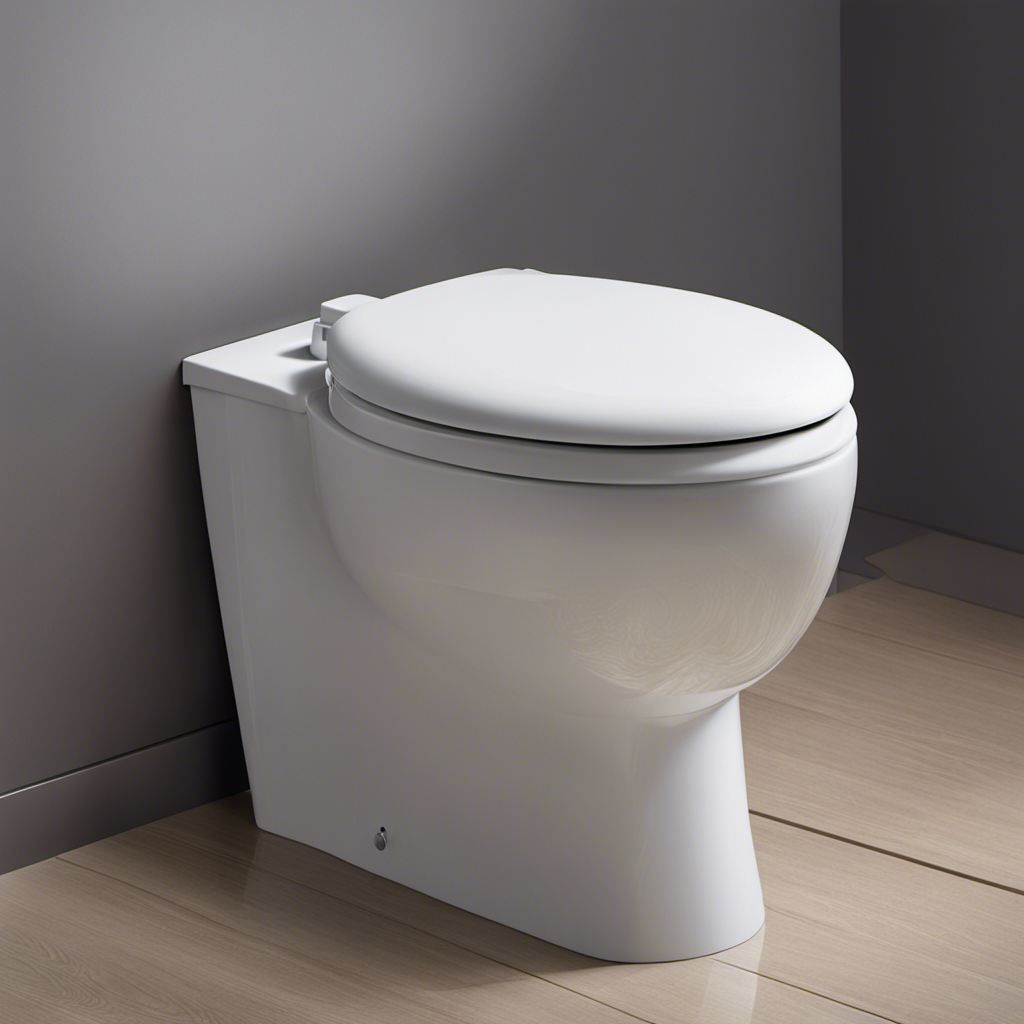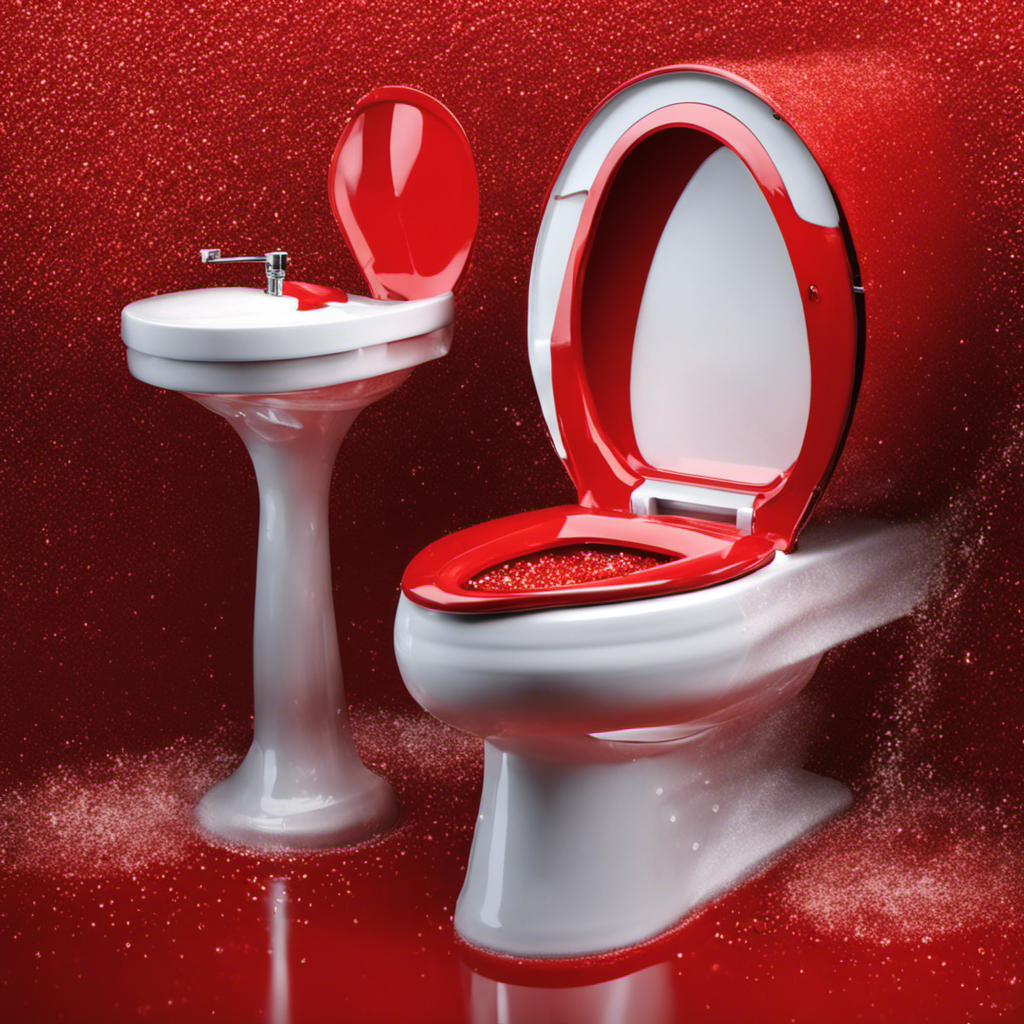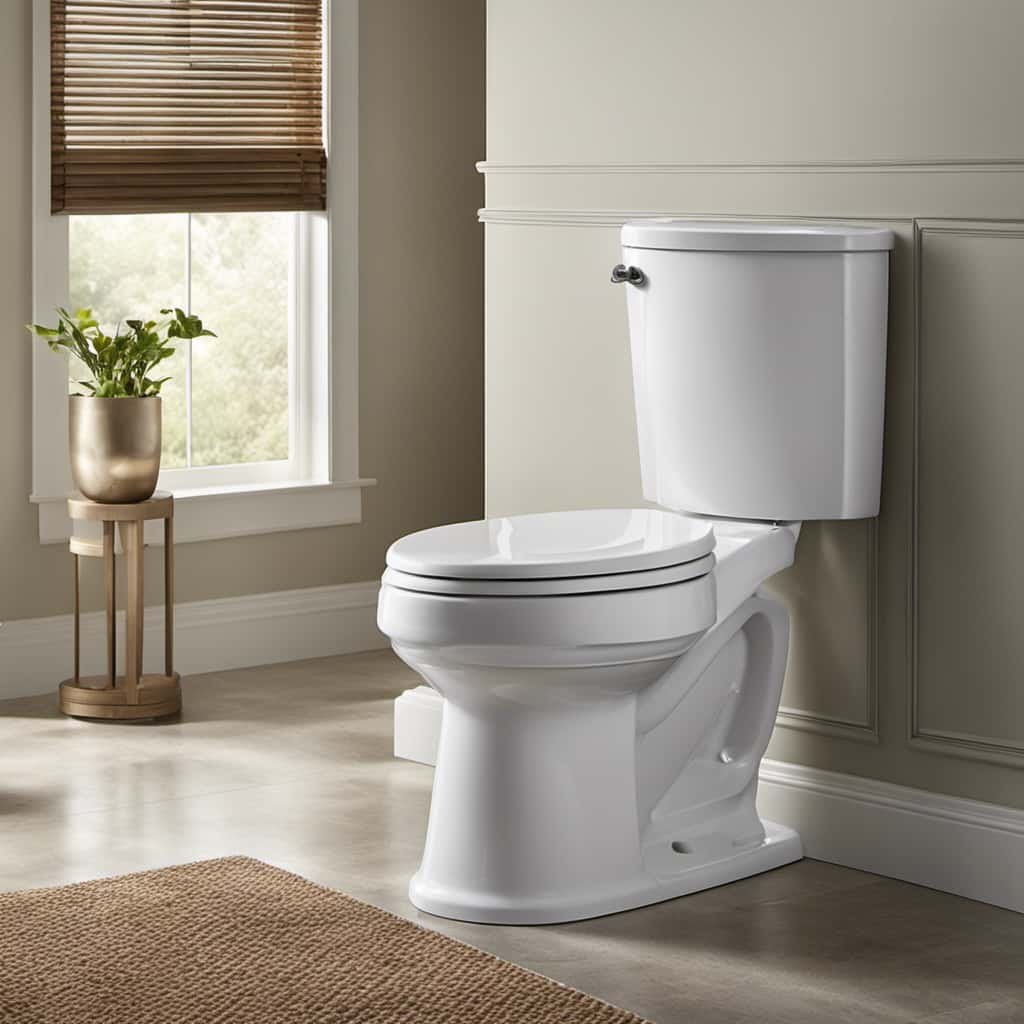Like a symphony of unexpected sounds, our toilets communicate with us through a language of their own. From gurgles to whistles, and bangs to constant running water, these noises can be perplexing and frustrating. But fear not, for I am here to guide you through the labyrinth of toilet noises and help you understand their meaning.
Armed with this knowledge, you will be able to troubleshoot and fix any plumbing issues with confidence. Let’s embark on this journey together and unravel the mysteries of toilet noises.
Key Takeaways
- Gurgling sounds indicate a blockage in the drain, which can be cleared with a plunger or drain snake.
- Dripping noises may be caused by a faulty water supply valve or worn-out flushing mechanism, which should be inspected and repaired or replaced.
- Whistling or hissing noises during toilet flushing may indicate issues with the fill valve or leaks around the flapper valve or tank bolts, which may require replacement or repair.
- Banging or hammering sounds in the plumbing system can be caused by silent leaks, loose pipes, or high water pressure, and should be addressed by securing pipes, installing water hammer arrestors, or adjusting the pressure regulator.
Common Toilet Noises Explained
If you hear a gurgling sound coming from your toilet, it’s often a sign that there is a blockage in the drain. Identifying unusual flushing sounds is crucial in determining the cause and taking appropriate action.
Gurgling occurs when air is trapped in the pipes, causing the water to flow unevenly. This can be caused by obstructions such as hair, debris, or even tree roots invading the pipes.
To investigate mysterious dripping noises, it’s important to check the water supply valve and the flushing mechanism. A faulty valve can result in continuous dripping, while a worn-out flushing mechanism may cause intermittent dripping.
Understanding Gurgling Sounds
Listen closely when you hear gurgling sounds coming from your plumbing, as they may indicate an issue with your pipes. Understanding these sounds can help you identify and address potential plumbing issues before they become major problems. Gurgling noises typically occur when air is trapped in the pipes, often due to a clogged drain or ventilation issue. To help you better understand the possible causes of gurgling sounds, here is a table outlining the most common reasons and their corresponding solutions:
| Possible Cause | Solution |
|---|---|
| Clogged drain | Use a plunger or drain snake to clear the blockage. |
| Ventilation issue | Check for any obstructions in the vent pipe and clear them if necessary. |
| Plumbing issues | Consult a professional plumber to inspect your plumbing system and address any underlying problems. |
Decoding Whistling or Hissing Noises
Pay attention to any whistling or hissing sounds coming from your plumbing. These noises could indicate potential issues with your pipes. If you hear such noises when flushing your toilet, it is important to investigate and address the problem promptly.
Here are some possible causes for toilet whistling or hissing sounds:
-
Faulty fill valve: A damaged fill valve can lead to a high-pitched whistling sound as water flows into the tank.
-
Leaking seals: Leaks around the flapper valve or tank bolts can create a hissing noise as water escapes.
To address these issues, consider replacing the fill valve or repairing any leaks around the seals. It may be necessary to consult a professional plumber for a thorough inspection and appropriate repairs.
Unraveling Banging or Hammering Sounds
When you hear banging or hammering sounds coming from your plumbing, it’s important to investigate and address the issue promptly. These loud noises can be indicative of underlying problems that could potentially lead to costly repairs if left unresolved. One possible cause of banging or hammering sounds is silent leaks in your plumbing system. These leaks can cause fluctuations in water pressure, resulting in the pipes banging against each other. It’s crucial to identify and fix any silent leaks to prevent further damage. To help you understand the different causes and solutions for banging or hammering sounds, refer to the table below:
| Possible Causes | Solutions |
|---|---|
| Loose pipes | Secure them with pipe clamps or straps |
| Water hammer | Install water hammer arrestors |
| High water pressure | Adjust the pressure regulator or install a pressure-reducing valve |
Troubleshooting Constant Running Water
To fix the issue of constant running water, you should check the flapper valve in your toilet tank to see if it is properly sealing. A faulty flapper valve can cause water to continuously flow into the bowl, leading to unnecessary water usage and higher water bills.
Here are some steps to troubleshoot and resolve the problem:
- Inspect the flapper valve for any signs of wear or damage.
- Look for cracks, tears, or warping.
- Ensure that the flapper is aligned properly with the flush valve opening.
- Clean the flapper and flush valve to remove any mineral deposits or debris that may be preventing a tight seal.
- Use a mild cleaning solution and a soft brush to gently scrub away any buildup.
- If necessary, replace the flapper valve with a new one that is compatible with your toilet model.
Frequently Asked Questions
What Are Some Common Reasons for a Toilet Making Bubbling Noises?
When a toilet makes bubbling noises, it could be due to a few common reasons. These include a clogged vent pipe, a problem with the sewer line, or a malfunctioning toilet fill valve. To fix a screeching noise, adjusting the fill valve may be necessary.
How Can I Fix a Toilet That Is Making a High-Pitched Screeching Noise?
To fix a high-pitched screeching noise in a toilet, check for a malfunctioning fill valve or a worn-out flapper. These issues can cause the toilet to leak or clog, so it’s important to address them promptly.
Why Is My Toilet Making a Loud Banging Sound When It Flushes?
When my toilet makes a loud banging sound during flushing, I troubleshoot the issue by checking for water hammer, loose pipes, or a malfunctioning fill valve. These common toilet flushing problems can be easily resolved with proper maintenance.
What Should I Do if My Toilet Is Making a Gurgling Sound After It Is Flushed?
When my toilet started making a gurgling sound after flushing, I knew it was a sign of a clogged toilet. To fix it, I used a plunger and cleared the blockage.
Is It Normal for a Toilet to Make a Hissing Noise When It Is Not Being Used?
Yes, it is normal for a toilet to make a hissing noise when it is not being used. This can indicate a problem with the toilet’s fill valve or water pressure. Proper toilet maintenance and troubleshooting plumbing issues can help resolve this.
Conclusion
In conclusion, understanding the various toilet noises can prevent potential plumbing issues and save you from costly repairs.
By deciphering gurgling sounds, you can identify if there is a blockage in the pipes.
Decoding whistling or hissing noises can help you detect a faulty fill valve or water pressure problem.
Unraveling banging or hammering sounds can indicate a loose pipe or water pressure fluctuations.
Troubleshooting constant running water can save you from wasting gallons of water and money.
By investigating the truth behind these theories, we can gain a deeper understanding of our toilets and maintain their optimal functionality.










